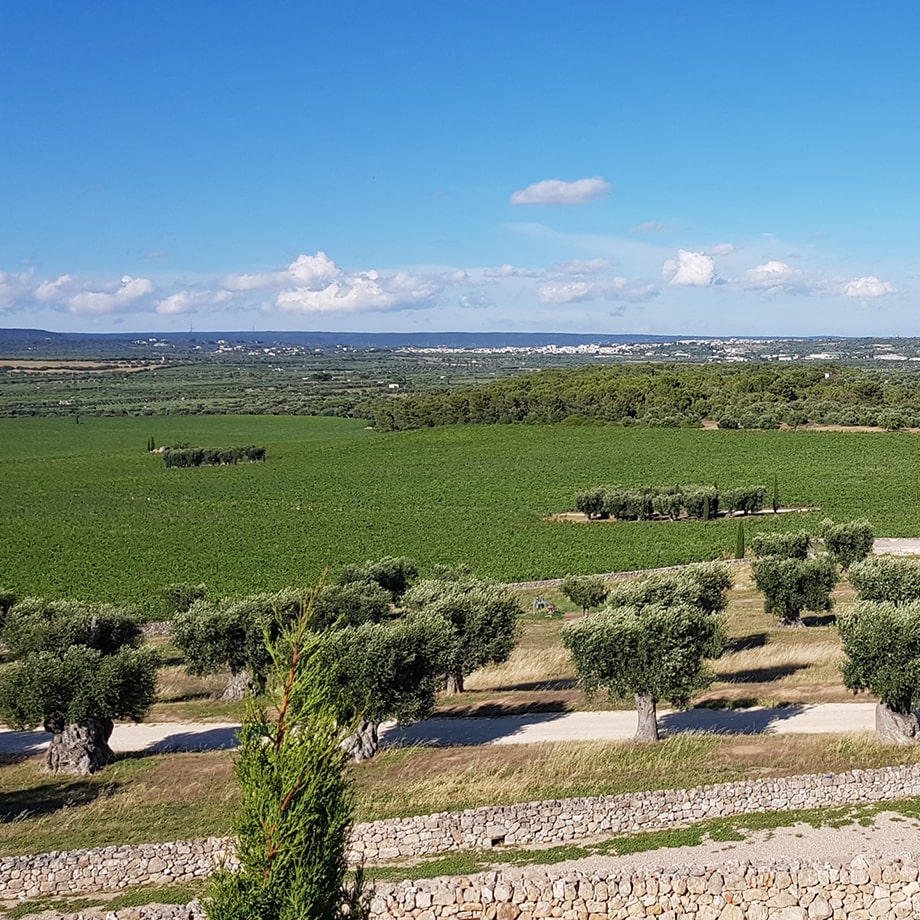A unique work in the world
An estate covering an area of 100 hectares restored to its former productivity thanks to an important technical redevelopment intervention. In the Vineyard-Garden as many as 11 different wine labels are produced, entirely using an organic method.
The vineyard designed by Fernando Caruncho
Functionality and aesthetic taste: these are the two principles upon which the vineyard has been conceived. The project was carried out by the landscape architect Fernando Caruncho: vine espaliers tracing out soft and parallel waves about 3 km long. “Waves of time that have been going through this place since antiquity”, as they have been defined by their designer himself.
Alongside the vines, 1,500 centuries-old olive trees were placed to form 24 “islands” located on the surface of the vineyard and along the historic ways that run through the property. These too are the result of a historical-monumental restoration work: they are about 800 years old and the diameter of some of them exceeds 2.5 meters.
The combination of olive trees and vines has created a harmonious visual contrast that grings together the vivid green of the vines with the silver-green hue of the olive trees.
Where the Vineyard-Garden
is located
Cantine Amastuola is located in the heart of the Regional Park “Terra delle Gravine”, in an area known under the name of land of “the hundred farms”, at Crispiano. Arriving in Amastuola, a long alley flanked by ancient olive trees welcomes visitors in a typical setting: the natural spectacle of the Gravina del Triglie.
This is a rocky area rich in typical vegetation: maritime pines and wild plants, such as rosemary, thyme, lentisk, strawberry tree, blackberry, wild rose, wild strawberries, hawthorn and Calaprice pears. The centuries-old olive trees, standing next to each other, create a landscape characterized by a silver colour, which is gradually composed and dissolved at the mercy of the blowing wind. All around, the turf changes colour according to the seasons and is intertwined with the sharp-edged profile of the typical local dry-stone walls.
